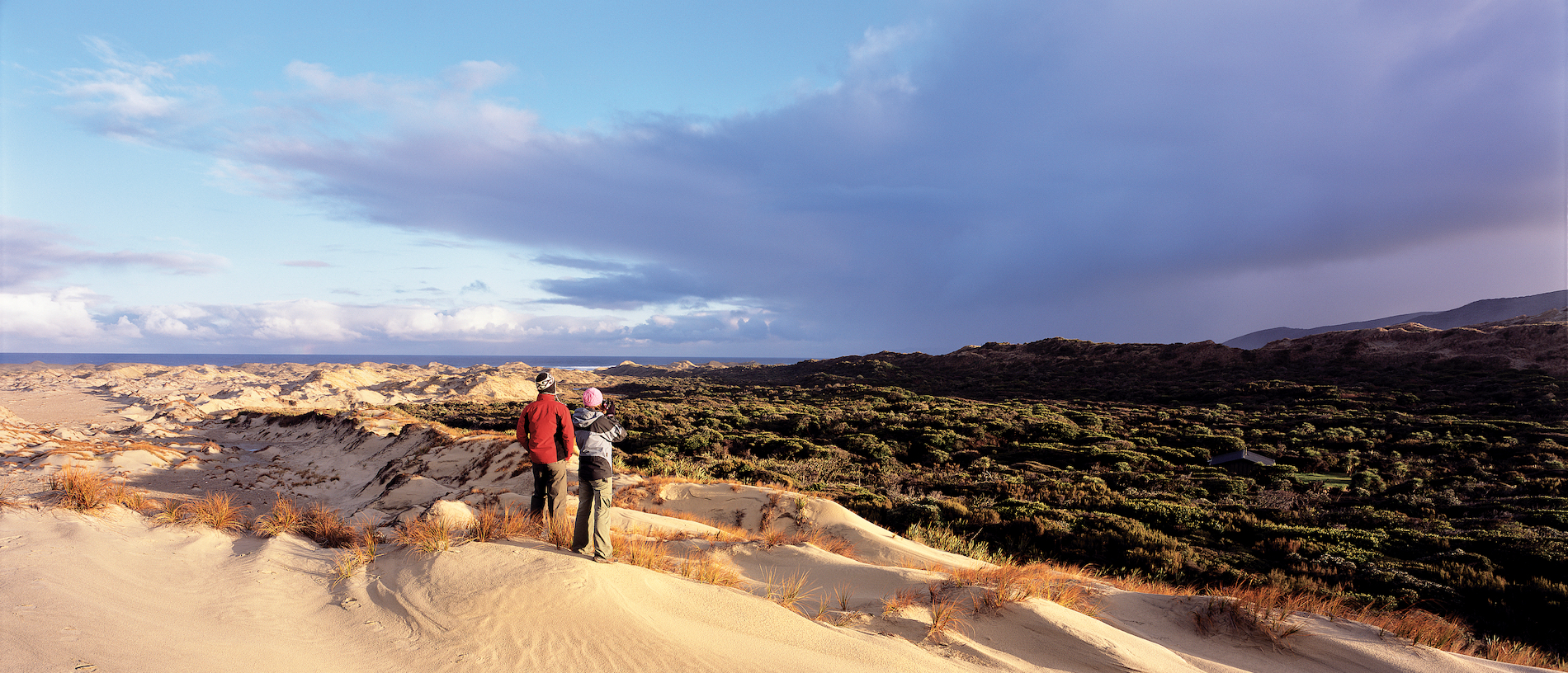
The Rakiura Track: beauty in isolation
Tucked away on New Zealand’s third island, Stewart Island Rakiura, the Rakiura Track is the perfect opportunity for an island adventure.
As you go south, twilight lengthens.
By the time you’ve crossed Foveaux Strait and arrived at Halfmoon Bay, the principal settlement on the southernmost of New Zealand’s three mainlands, Stewart Island, sunsets and sunrises stretch into smouldering pyrotechnic displays. This is why the Māori knew Stewart Island as Rakiura – ‘land of the glowing sky’ – although it’s also a splendid vantage from which to see the Southern Lights, the aurora australis, too.
James Cook made one of his rare mistakes when charting Stewart Island. He spied it from afar but didn’t spot it for an island, supposing Foveaux Strait to be the entrance to a big bag. (This sort of made up for his other boo-boo, turning Banks Peninsula into an island).
It was left to Captain William Stewart, a seadog of murky repute who visited New Zealand waters three decades after Cook, to fill the Strait with water. For that, he got the newly-recognised island named after him.
The great thing about Stewart Island from the present-day perspective is that down the years, no one really found much point settling there. Sporadic rushes on the island’s seals, whales, gold, tin and fish have caused the occasional spike in the resident population, but even today, it’s just over 400 strong. The failure of all these attempts to get a boom going has meant that Stewart Island was passed down to us more or less unspoilt, and much of its 157,000 hectares now forms the Rakiura National Park.
Visitors from the north will immediately notice the profusion of birdlife. Species that are rare outside bird sanctuaries further north – such as kākā and kiwi – are comparatively plentiful here. Indeed, most visitors will get to see a kiwi in the wild if they wish, whether in the course of their own nocturnal explorations or as a member of a dedicated ‘spotting’ party.
There’s plenty of superb tramping to be done in the National Park, with over 220 kilometres of tracks maintained throughout. The Rakiura Track, which was opened a mere 20 years ago, is one of New Zealand’s Great Walks. It takes three days to traverse, during which time you’ll see few other souls, plenty of birds, a diverse landscape with rocky ridges and bluffs soaring clear of the rainforest, and heaps and heaps of mud. Longer tramps are available, and for the less energetic, there are cruises and, of course, the option of just kicking back and watching the sunset.